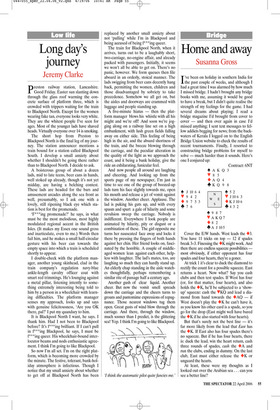Home and away
Susanna Gross
I’ve been on holiday in southern India for the past couple of weeks, and although I had a great time I was alarmed by how much I missed bridge. I hadn’t brought any bridge books with me, assuming it would be good to have a break, but I didn’t quite realise the strength of my feelings for the game. I had several dreams about playing; I read a bridge magazine I’d brought from cover to cover — and then over again in case I’d missed anything; I sent text messages to fellow addicts begging for news; from the backwaters of Kerala I logged on to the English Bridge Union website to check the results of recent tournaments. Finally, I resorted to constructing bridge problems for myself to solve — much harder than it sounds. Here’s one I conjured up: Cover the E/W hands. West leads the ♦3. You have 11 tricks on top — 12 if spades break 3–3. Finessing the ♦K might work. And then there are endless squeeze possibilities most obviously, if either opponent has four spades and four hearts, they’re a goner.
At trick 1 it’s clear to duck the diamond to rectify the count for a possible squeeze. East returns a heart. Now what? Say you cash clubs and then test spades. If West has four (or, for that matter, four hearts), and also holds the ♦K, he’ll be subjected to a ‘showup’ squeeze: cash the TKQ and lead a diamond from hand towards the ♦AQ — if West doesn’t play the ♦K he can’t have it, as you know his other card is a spade, so you go for the drop (East might well have bared the ♦K if he also started with four hearts).
But that’s surely not the best line — it’s far more likely from the lead that East has the ♦K. If East also has four spades there’s no squeeze. But if he has four hearts, there is: duck the lead, win the heart return, cash three rounds of spades, cash the ♦A and run the clubs, ending in dummy. On the last club, East must either release the ♦K or unguard the hearts.
At least, these were my thoughts as I looked out over the Arabian sea . . . can you see a better line?


































































 Previous page
Previous page